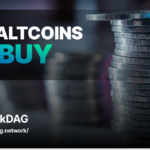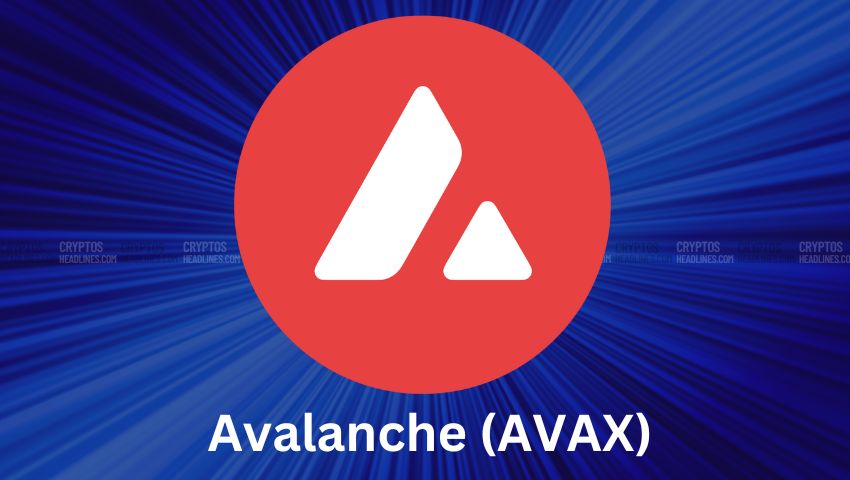With blockchain technology rising in global prominence, developers are creating innovative solutions like the Avalanche network (AVAX) to address scalability, usability, and interoperability issues.
AVAX employs unique consensus mechanisms, including Avalanche consensus, facilitating rapid transaction processing and high throughput. This approach ensures decentralization, security, and seamless user experiences.
Avalanche Network: Advancing Blockchain Innovation
Avalanche is an innovative contract blockchain that prioritizes high transaction speeds, lower fees, and eco-friendliness. Its primary goal is to deliver a highly scalable, decentralized, and secure blockchain ecosystem. The platform equips users with tools and features to launch decentralized finance (DeFi) applications (dApps), create digital financial assets, and develop enterprise financial solutions.
At its core, Avalanche boasts the fastest smart contracts blockchain technology within the cryptocurrency industry. This cutting-edge technology is fueled by its native token, AVAX, and supported by various consensus mechanisms. Let’s delve deeper into understanding the workings of the Avalanche network.
Origin and Development of Avalanche Technology and Network Architecture
Avalanche technology was initially proposed in May 2018 by a group known as Team Rocket, who recommended the protocol via the Interplanetary File System (IPFS). This technology was further developed by Emin Gün Sirer, a software engineer and Cornell professor of computer science, along with his two doctoral students, Kevin Sekniqi and Maofan “Ted” Yin. Ava Labs publicly released AVA (Avalanche codebase) in March 2020 and subsequently launched the Avalanche platform later in the same year, following a successful $6 million financing round.

Avalanche in 2024 – TradingView
The Avalanche network is an innovative three-blockchain system with an impressive architectural design. Each of the three blockchains within the platform is designated to perform specific tasks. By distributing tasks across these distinct blockchains, the Avalanche platform achieves agility, enabling scalability, decentralization, and enhanced security.
Avalanche Network: Blockchain Functionality
Avalanche’s C-chain operates on smart contracts and is compatible with the Ethereum Virtual Machine (EVM). This compatibility with EVM allows developers to deploy their Ethereum smart contracts on Avalanche, facilitating the creation of decentralized applications (dApps) and decentralized finance (DeFi) solutions. Developers can utilize Avalanche features by deploying Ethereum smart contracts on Avalanche while utilizing Ethereum developer tools.
Avalanche continues to become more popular and make new partnerships every day!
Also, with AVAX burning, total supply is decreasing!
Today, a record was broken in C-Chain transactions and the total number of transactions exceeded 2 million! It will be more!$AVAX #AVAX pic.twitter.com/cV0tdDkaSX
— Crypto Ivar 🔺 (@CryptoIvarr) November 20, 2023
The Avalanche P-chain utilizes the Snowman consensus protocol, enabling developers to create both Layer 1 and Layer 2 blockchains, referred to as subnets. The P-chain serves as the default subnet, accessible to all users. It manages Avalanche subnets by overseeing validators, although the subnets validate the P-chain.
Meanwhile, the X-chain, leveraging the Avalanche consensus protocol, generates and transacts Avalanche assets. Typically, the Avalanche native token (AVAX) is used to cover all transaction fees. Even when transacting with other Avalanche tokens like JOE or PNG, transaction fees are paid in AVAX.
Avalanche Network: Addressing Blockchain Challenges
Older blockchain platforms like Ethereum and Bitcoin relied on Proof-of-Work consensus mechanisms and struggled with low transaction processing speeds, handling only 25 and 7 transactions per second, respectively. In contrast, the Avalanche network resolves these issues by achieving transaction processing speeds of up to 4,500 transactions per second.
Interoperability and Innovation: Despite the emergence of new blockchain technologies, interoperability remains a challenge as many blockchains struggle to communicate effectively. Avalanche addresses this issue by supporting the creation and trading of various cryptocurrencies, enhancing interoperability across the ecosystem.
Layer 2 Functionality and Enterprise Solutions: Avalanche introduces a range of layer 2 blockchains to enhance its functionality, making it attractive to enterprises and businesses. The platform’s focus on improving network flexibility, security, and sustainability further solidifies its position as a leading blockchain solution.
Benefits and Market Dynamics of Avalanche (AVAX)
Unique Design and Usability: Avalanche presents significant benefits through its unique structure, notably in terms of usability. The network’s straightforward usability has proven helpful across various use cases, simplifying adoption and implementation for users.
Scalability and Processing Capacity: Avalanche stands out as a robust and scalable network capable of processing up to 6,500 transactions per second, far surpassing Bitcoin and Ethereum’s capabilities. With sub-second transaction times and impressive processing capacity, Avalanche provides the scalability required for blockchain networks to thrive.
Interoperability and Data Sharing: A key advantage of Avalanche is its support for interoperability, allowing distinct blockchains to share data and operate seamlessly. This feature sets Avalanche apart as one of the few platforms enabling users to trade different cryptocurrencies within a unified network.
Value Proposition and Market Dynamics: AVAX derives its value from the technical prowess of the Avalanche network, its diverse range of use cases, and its relevance in decentralized finance (DeFi) and decentralized applications (dApps) sectors. However, the cryptocurrency’s intrinsic value, particularly in financial use cases, does not always align with its market value.
Market Volatility and Current Status: The market value of AVAX, like many cryptocurrencies, is subject to fluctuations due to the volatile nature of the crypto market. Prices can change rapidly within short periods. Presently, AVAX’s market value stands at $20.78, with a market capitalization of $7.59 billion.
Possible $AVAX price action. 👀
Head and Shoulders bottom pattern. 🚀#avalanche #avax pic.twitter.com/ye3JGabzQt
— Keroro 🔺 (@coinkeroro) November 23, 2023
In Summary:
Avalanche is emerging as a major competitor to Ethereum, offering speed, reliability, and interoperability for supporting decentralized applications and autonomous blockchains. For investors, this suggests that AVAX is a promising cryptocurrency investment with a bright future ahead.
Important: Please note that this article is only meant to provide information and should not be taken as legal, tax, investment, financial, or any other type of advice.
Join Cryptos Headlines Community
Follow Cryptos Headlines on Google News











